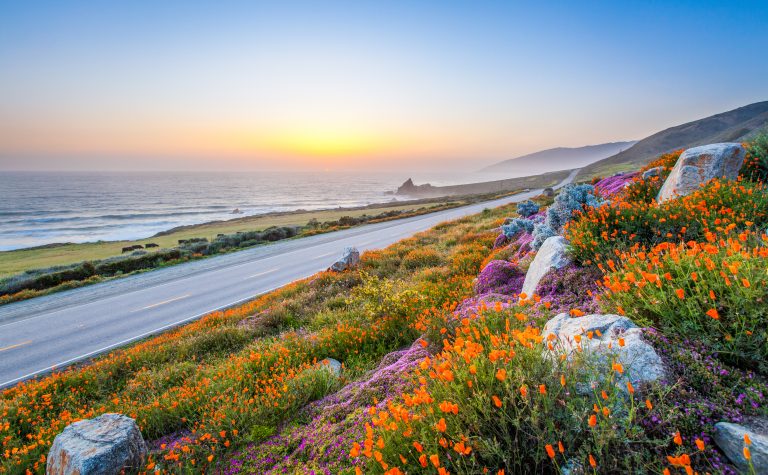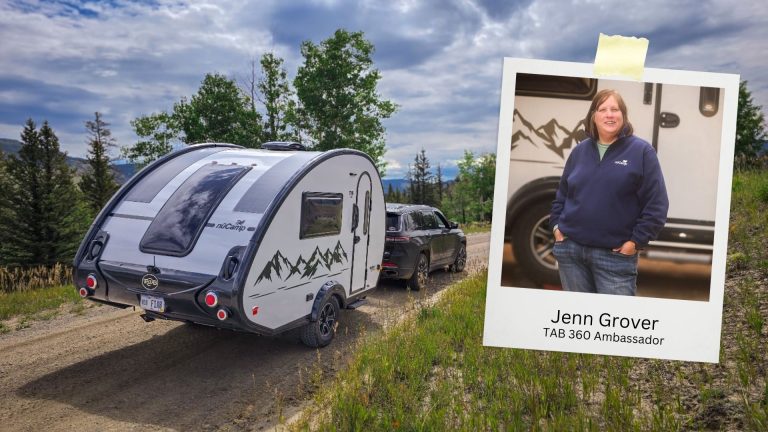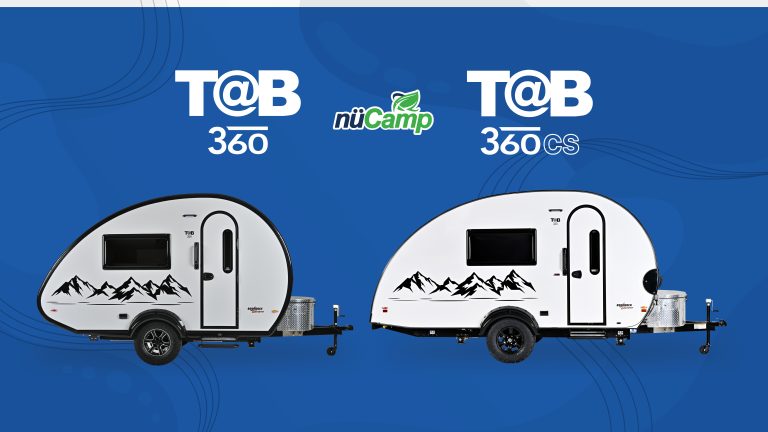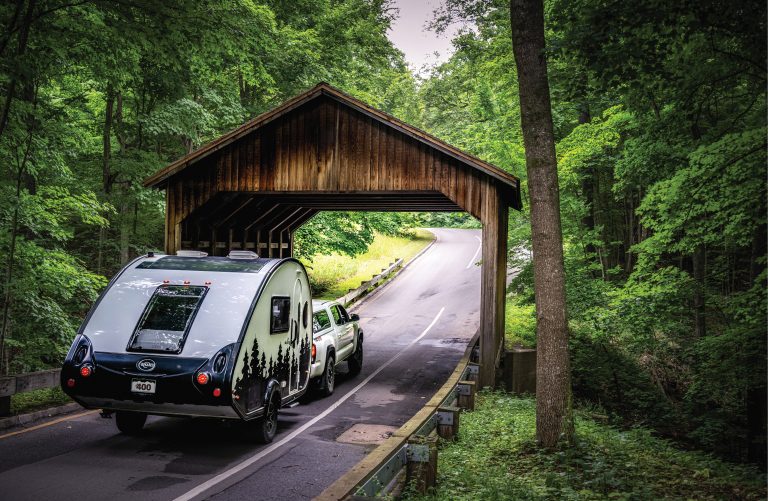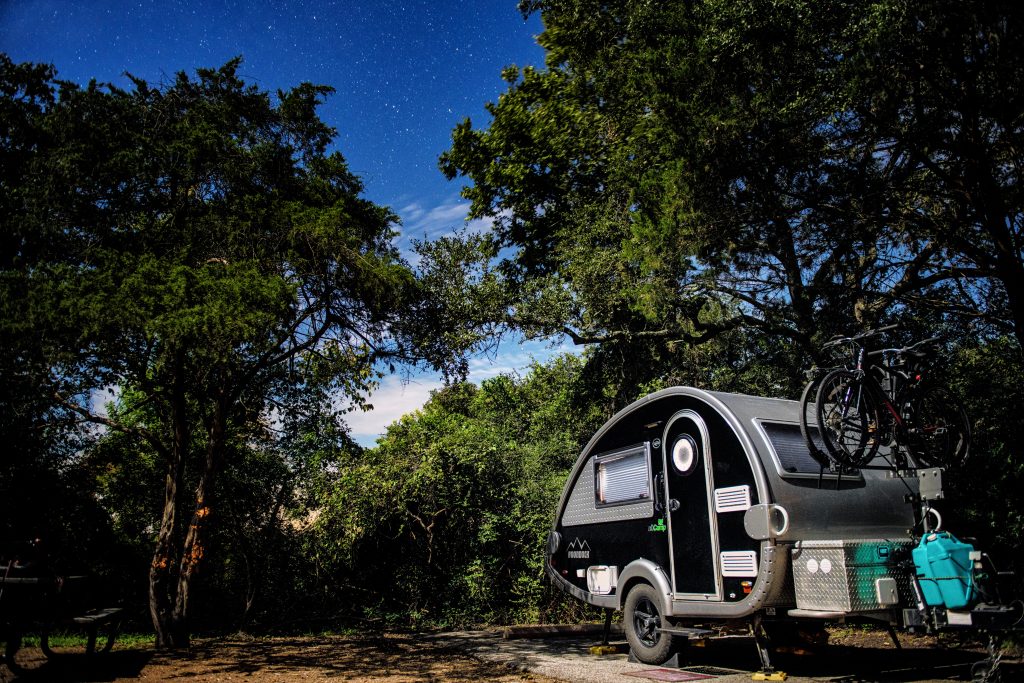Thinking about boondocking with your RV? Boondocking, also known as dry camping, offers specific benefits, from saving money (sites can be free or very low cost) and parking at locations where you can enjoy the peace and quiet of Mother Nature to having the freedom to stop when you want without worrying about finding an open campground.
But that freedom also means that the benefits of conventional campsites—electric, water and/or sewer hookups—aren’t going to be available. This means you need to undertake some careful planning and prep so you don’t find yourself in the wild without the necessities you’ve grown accustomed to! RV with Tito recommends thinking of what could go wrong and have a strategy for dealing with it. And always have a back-up plan and make sure someone knows where you’re going—just in case!
We’ve put together our top five boondocking tips to help make sure your experience is all you hoped for!
If you’re looking for ideas where to boondock, check out Camping World’s 5 States With Incredible Boondocking Camping Spots. You can also join Boondockers Welcome or Harvest Hosts, both of which offer a searchable list of locations for free overnight stays with membership. You can also access Boondocking.org’s publicly available database of GPS coordinates for boondocking.
Other sites to check for boondocking are Bureau of Land Management (BLM), US Forest Service (USFS), U.S. Fish and Wildlife Service, UltimateCampgrounds, Campendium and FreeCampsites.net. Note: some government-owned locations may require a camping pass. You can also visit the US Forest Service website to obtain free Motor Vehicle Use Maps (MVUMs) that identify those roads, trails, and areas designated for motor vehicle use. Keep in mind that national parks in the U.S. do not allow any form of boondocking, and even some places within the BLM and USFS prohibit boondocking.
More tips for finding boondocking locations are available in Wheelingit’s Boondocking For Newbies Part I -Finding Where To Go, while RV Love’s 29 Tips for Successful Boondocking has great dry-camping advice.
Tip 1: Do a dry-camp test run
Don’t jump into full-fledged boondocking if you’ve never tried it before. Instead, do some practice dry-camping. Stay at a friend’s or family’s place, relying on your RV to supply all your services. This gives you a back-up in case you didn’t do enough prep work with your equipment. Or stay at a campground that has only limited services. Camping World suggests doing a partial hook-up stay: water and electric but no sewer service, for instance.
Then stay at one of the sites available through Boondockers Welcome or Harvest Hosts. While you’ll still have to be self-sufficient, you’re not out in the wild in case something goes awry. Finally, do the full boondocking experience, staying at national parks or sites under the Bureau of Land Management (BLM) or a dry camping location found through the boondocking.org database.
At each stage of your boondocking test-run, make a list of all the tasks you didn’t do that you should have and the problems you ran into that could have been avoided with a little pre-planning.
Tip 2: Follow boondock etiquette
Boondockers like their space so when you move into a dry camping location, leave as much space as possible between your rig and that of your neighbors, and look for places that have already been used by other campers to minimize your impact on the surroundings.
Then, be noise-and light-considerate. Don’t blare your radio or run your generator 24/7, and check that your exterior lights aren’t shining beyond your perimeter or burning well into the evening hours. Boondocking is all about enjoying nature, but it’s hard for your neighbors to see the stars in the sky when they are obscured by your “light pollution.”
Finally, if you’ve brought along Fluffy or Fido, keep them under control—both for their safety (you are in the wild after all!) and for the comfort of your neighboring boondockers. (Bonus advice: Clean up the pet poop. You may be in the wild but that doesn’t mean you can leave “gifts” behind for others to smell or step in.)
And when you’re ready to depart, pack up your trash and take it with you, following the Seven Principles of Leave No Trace. (That goes for the contents of your black-water tank, too. Find a dump station if your tank needs emptying.)
Tip 3: Obey stay limits
Do your research or call ahead if you are using places like retail, entertainment or restaurant parking lots to check their rules. Depending on the state, some rest areas to allow overnight stays. Government-owned land may also have restrictions on stay times or other regulations or require a camping pass.
Go RVing recommends contacting a BLM office or USFS station in the area you want to camp for time limitations and other information, and give them specifics on your RV in case the area isn’t a good match for your rig. Generally speaking, public lands have a 14-day max stay limit, after which you have to move.
Tip 4: Plan for your power and water needs
Remember that boondocking means no water, no power, and no sewer. That means you need to have what you need for the length of your stay. RV with Tito recommends knowing the capacity of your tanks (water, grey, and black) and your battery bank. (Go RVing’s Off the Grid and Away: Boondocking Tips and Tricks has useful advice on how to conserve your water usage and black water tank overload.)
Those boondocking test runs are ideal to figure out your daily needs in terms of water and power and learn what adjustments or modifications you need to make. Pack extra propane and water so you’re not caught unawares.
Tip 5: Know your rig’s requirements
There’s a big difference between parking at an RV campground and traveling up and down country roads to a dry camp location. Can your rig navigate hills or hairpin turns? Does your chosen campsite allow you to turn your rig to exit “head first”? If the weather takes a turn for the worse—rain or snow, for instance—will you be able to drive or tow your RV out of the boondocking site?
Research the area before driving into it or check it out by foot or car to verify that it’s suitable for your RV. While exploring the “road less traveled” can sound exciting, it can result in you and your rig trapped in an inaccessible location. Experienced boondockers know the importance of being prepared and planning ahead.
Watch these YouTube videos for more boondocking tips:
Tips & Tricks For Successful RV Dry Camping & Boondocking – No Solar Necessary! How We Do It and The Art of Boondocking & Free Camping.
For more on boondocking, read our City Stops: How to Find Camper Parking in Urban Areas and Go Off the Beaten Path: Introducing New Boondock Packages for Off-Road Adventurers.
Recent Articles
